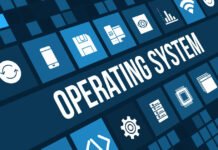Fortricks’ ongoing safety calls for the state-of-the-art discovered vulnerabilities to be avoided without end-issuing patches for most laptop operating structures. And, of course, many of those vulnerabilities are located most straightforwardly after a few terrible actors have exploited them. According to Guofei Gu, associate professor of computing at Texas A&M, the unhappy state of affairs results from the fact that most working systems were designed without protection in mind.
Gu and colleagues at four different universities — Clemson, the University of Colorado, the University of North Carolina, and the University of Texas — have obtained $three million from the National Science Foundation and VMware for a 3-year assignment to construct a brand new operating machine, this time with safety as a number one consideration.
Gu stated that the critical distinction between S2OS and other running systems is that its miles are advanced as a software program described as a hypervisor that creates and manages virtual machines. The two S’s — signified via “S2” in its call — consult with “software program described infrastructure” and “protection.” S2OS’s software program, Hypervisor, is designed to centrally manage networking, garage, and computing sources centrally.
They are building the OS as a software-designed infrastructure that helps digital machines provide blessings that older working systems can best approximate. First, OS runs as a digital machine, so its miles are included from assaults at the application layer. “Even if a person can hack into an application, our protection services are removed from that, so we’re immune from this attack,” Gu said. “We call it robust isolation.”
READ MORE :
- The Latest Home Security Solutions Are Among the Most Effective
- Disadvantages of Computers in the Classroom
- Breaking News On the Web and TV
- 6 of the Best Markdown Plugins for WordPress
- Get the Most Out of Your Travel Agent
Another benefit of S2OS running as a hypervisor is that it sits, especially in software and community activity. “We provide international visibility,” he stated. “We may be aware of what is occurring in the complete infrastructure,” Gu explained, saying that existing operating systems are handiest aware of what is occurring in an available system. “Sometimes when something occurs, if you look locally, it doesn’t appear to be an attack, but in case you look globally, it’s certainly an attack,” he stated.
Finally, S2OS is itself a centrally managed virtual system. If a chunk of malware is advanced and succeeds in attacking it, driving the danger approach creates a software program restoration that doesn’t need to be issued for updating to endless servers. “Software-described infrastructure makes it smooth to trade to reply to malware,” Gu said.
S2OS is not being designed to stop customers. Instead, it’s being developed for the underlying infrastructure to which the purchaser OS, Microsoft Windows, and Apple OS X will connect. However, cease users will still gain from S2OS security. “They will be included because the underlying software-described infrastructure layer, which includes networking and communications, can be monitored and guarded by S2OS,” Gu said.
“Every hobby the users do — clicking links, shifting statistics, browsing the internet — of their everyday OS’s will eventually undergo the underlying infrastructure layer and as a consequence can be included.” Businesses and other organizations will benefit, too, from more robust protection at a lower cost. “We want to provide a unified protection management space,” Gu stated. “You can purchase secure offerings in person, which could be pricey. Our answer is the software program described, meaning you do not have to shop for a very pricey appliance.”






